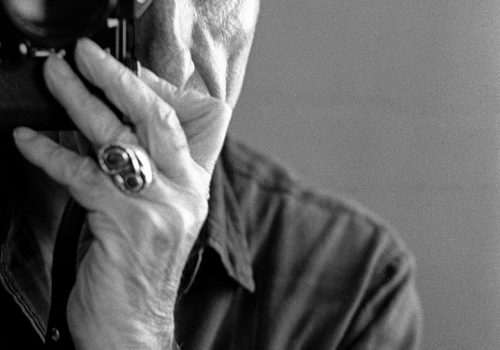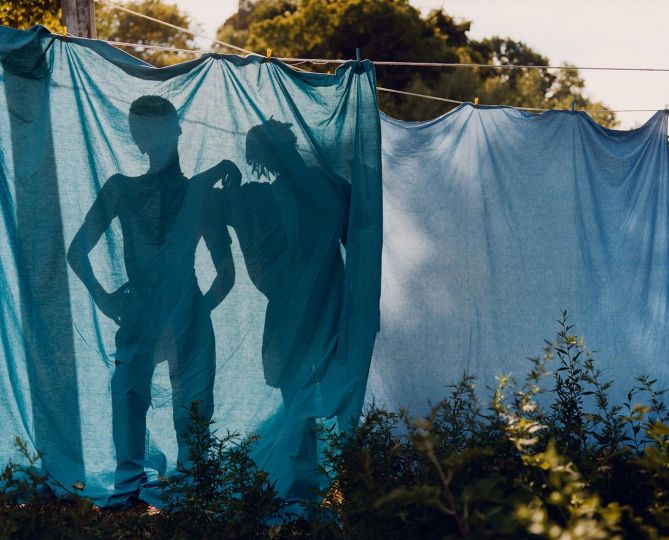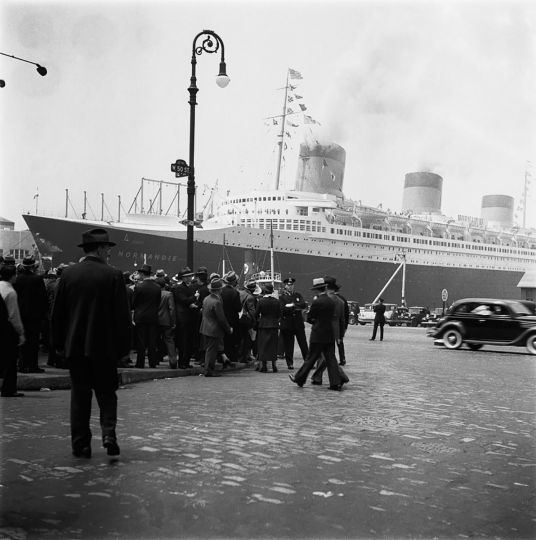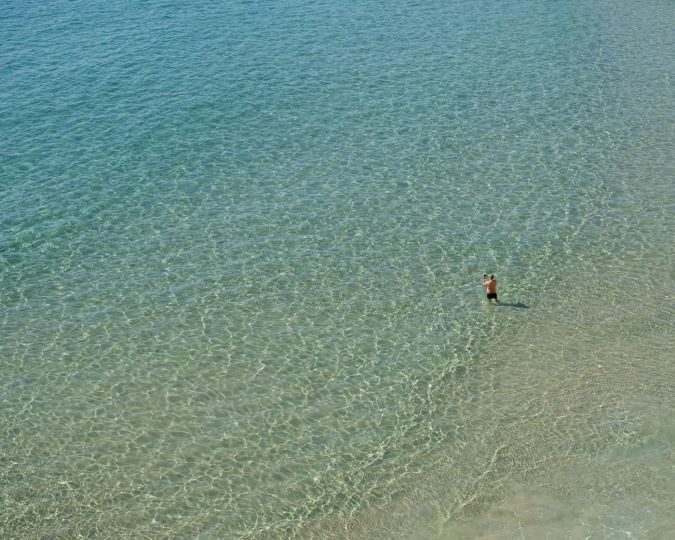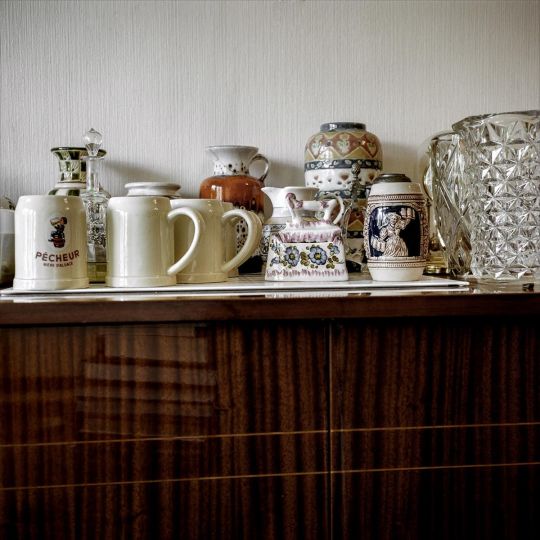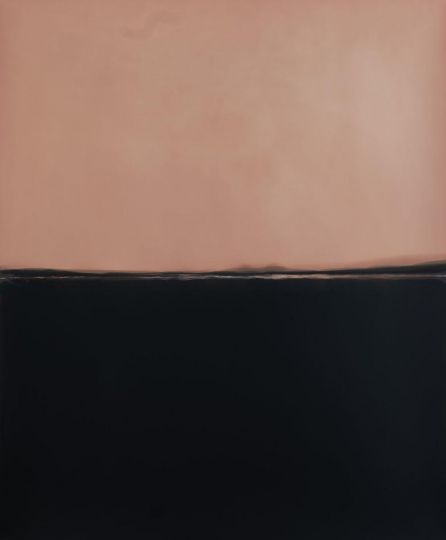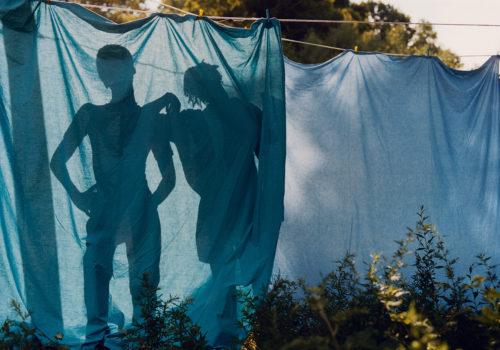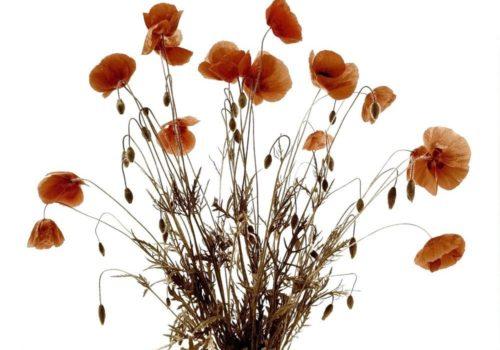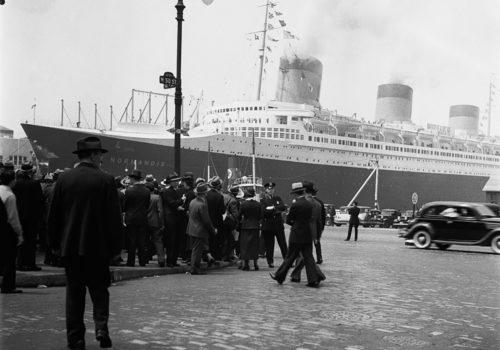by Jean-Jacques Ader
Do you know the oldest French Rock group in activity? : The Frantic Rollers. The group was founded in Agen in 1963, with singer and guitarist Gilles Mora on the microphone. If his ear retained the attraction for music from across the Atlantic, his gaze was educated in the South of the continent where Elvis Presley was born.
Jean-Jacques Ader : What was your first contact with the United States?
Gilles Mora : It was at the beginning of the 1970s, after studying literature and after getting my teaching degree I had to do my military service. Having opted for cooperation, I chose to go with my wife, who was also a teacher, to teach French in Louisiana where positions had just been offered. I spent three years there, and during my free time I started to familiarize myself with this region by photographing it, and to gradually absorb the American photography which was in full swing. I quickly linked with people like Beaumont Newhall who was already a great photo historian, and who lived in Santa Fe like Bernard Plossu. Upon my return to France I was appointed professor of linguistics in a teacher training college in Agen, and despite my many activities during my life, I remained a teacher.
Shortly after you launch Les Cahiers de la photographie
Yes, in 1981 with Denis Roche; I had already met Bernard Plossu and Claude Nori. The will was to write on photography, something that hardly existed at the time. There were magazines on literature, cinema or the visual arts but not on photography. So I started to specialize on American photographers, doing a few occasional exhibitions in Arles. Around 1985 Jack Lang (Minister of Culture) asked me to set up exchanges around photography with the city of Atlanta where I went regularly, which strengthened my links and my contacts in that country.
This passion for modern Americans has materialized in publishing
I took the direction of photography at Éditions du Seuil in 1993 until 2007, through the collection L’euvre photographique. So we launched a large collection of international monographs, buying the world rights of American photographers I knew well, Walker Evans for example, Edward Weston etc… I worked with the photo archive center of Tucson in Arizona where was deposited the work of all the great photographers, there was Man Ray and Kertész, German photographers too; I was constantly immersed in this activity of research of images, publishing or exhibitions.
You then take the artistic direction of the Rencontres d’Arles
In 1999, “Vive les modernités!” »Will be my first program, featuring Lee Friedlander and Walker Evans but also Rodchenko, Viennese activists and the theme of blurring, just to break away from the Arles regulars. My second year was under the sign of “Crossed Photography” on the relationship that photography has with other art forms. With a tribute to Tina Modotti and the Mexican Renaissance, the first complete retrospective of Jakob Tuggener as well as Masahisa Fukase and Sophie Calle. For the third year I chose the theme of Anonymous, not anonymous photography but how photography was interested in anonymousness.
After these three years spent at the Rencontres and since the Boston Museum of Fine Arts knew that I was preparing a monograph on Charles Sheeler, I went to mount a large exhibition on this great American painter and photographer, which was then shown at the Metropolitan Museum of Art from New York.
Other exhibitions followed for institutions, in Switzerland or for the Vienna museum in Austria, and this brings us to 2010 when the city of Montpellier contacted you.
The municipality wanted to revive and develop the activity of the Pavillon Populaire, which was already dedicated to photography, but on an irregular basis.
What is your exact title?
I’m the art director. I take care of the choice of exhibitions, and depending on the artists and themes, I take charge of the exhibition as curator or I entrust it to competent international curators, American, German or Swiss for example.
Did you set conditions before accepting?
The new team of the culture department of the Town Hall asked me if I was interested and, before accepting, I asked to have complete freedom of programming, a substantial budget which allows me to create new exhibitions, with their catalogs published by a major publisher, a national press attaché, an educational effort with booklets of exhibitions distributed free of charge and a permanent mediator position. The municipality said ok to all of this, while preserving free entry, always driven by the desire to develop the cultural policy of the city and by a culture budget which is the second after Paris I believe. In two years, thanks to the financial effort of the city and the mutual trust that exists between us, the attendance has increased from 7,000 visitors to 25,000 and up to 50,000. The teams had to train for specific works and collaborate with international institutions. For each exhibition, a press trip is organized for the Parisian and international press, which provides very wide media coverage.
Here, at the rate of three per year – not counting the Boutographies that occupy the walls during each month of May – each exhibition is a creation. For example for the Finnish Elina Brotherus, in 2016, it was her first retrospective in France, which was also taken up in Finland, Sweden, Austria, all this in partnership with the Popular Pavilion. The arrival of Ralph Gibson in 2017-2018 was an opportunity to publish his famous trilogy by grouping the three volumes into one. This catalog was bought and distributed by an American publisher and was ranked 5th of the best photo books two years ago.
What is the function of an exhibition for you?
It’s to educate people, complemented by an educational mediation action; Hence the free 35,000 copies booklet, distributed free of charge at the exhibition site and the catalog edition. From the start, I wanted to keep the popular side that we find in the name of the place, and that people who visit understand what is presented. I also put my skills at the service of the public, I want to mount projects that we are the only ones to do, such as the retrospective of Aaron Siskind, in 2014-2015, major figure of the vernacular architectural image as much as expressionist, that no American museum has honored. As his beneficiary was a friend of mine, I knew where the photo collection was, and it was the first time that the route was reconstructed in its chronology.
However, I try to present all the most varied aspects of photography, historical, heritage, contemporary. Valie Export, who closes the 2019 program for example, is a great international artist who laid the foundations of feminism in photography and had never been shown in France.
You also managed to link the image and the music, you are also the singer-guitarist of the Frantic Rollers, Rock nRoll group still in activity
The band dates from 1962-63, and we will be playing next month! Everyone else stopped but we didn’t. We were among the first to play Rockabilly in France. We were invited everywhere, with the musicians of Elvis in Memphis in 96 in Graceland thanks to Bill Ferris, who then became delegate for culture of Bill Clinton and who was the commissioner of the expo on American civil rights two years ago. Right after the fall of the wall, we went to play in Berlin. I even managed to bring in Arles Carl Perkins, with whom I stayed in touch, to play together during an evening of presentation of my photographs.
In 96, as I often went to the Tucson photography center, I met the McCartney family who had a ranch nearby, and I found Linda McCartney passionate about photography and very productive herself, telling myself that one day I would give her a retrospective. Sadly, she died two years later. Fifteen years later I managed to contact Paul McCartney, reminding him that we knew each other, that his wife Linda kept my book on Walker Evans with her and especially that I was a friend of Carl Perkins, his idol. This had the effect of gaining his confidence and having his agreement to exhibit his wife’s work in Montpellier. He even came with his family in a jet to open the exhibition, with his children and his grandson. It was a great time, even if the security service was a little more complicated than usual …
Police guitarist Andy Summers, another encounter?
I met Andy at Ralph Gibson’s in New York, he’s a really nice guy and I knew he was doing photography. I went to his home in Los Angeles to see his work and play the guitar too. He is a very good photographer and his exhibition has worked very well, it has traveled to the Netherlands and must be in Moscow in March 2020. In Montpellier he offered us a free concert, improvised during the projection of his images.
Do you have an unfulfilled desire for exposure?
I would love to do a retrospective of Ben Shahn, American painter and photographer. In the 1930s, he was one of twelve photographers, along with Dorothea Lange and Walker Evans, commissioned by the Farm Security administration to paint a portrait of America in crisis. I went to Boston for the selection of images at the Folk Arts Museum which gave me their agreement, but it turns out that the transportation of his works is currently beyond our means. I have not given up on the idea but we would need one or more partners to help us.
The next exhibitions in 2020?
In early February, that of Jean-Philippe Charbonnier, a humanist photographer who has been somewhat forgotten for thirty years, will begin until the end of April. The Boutographies will then take over in May, to arrive at a large American exhibition co-curated with the Howard Greenberg gallery, The School of New York 1940-1965, from the end of June until October. The year 2020 will end with the retrospective of Georges Molder, a great Portuguese contemporary photographer to switch to the year 2021, which will focus on the theme of photography and ecology.
Gilles Mora published Walker Evans, the thirst for the reference book look, in 1993 at Seuil. He won the Nadar Prize in 2007 for his book La photographie Américaine 1958-1981 also published at Seuil.
The editions La main published Antebellum in 2016 which includes his photos from the South of the USA.
Le Pavillon Populaire, esplanade Charles-de-Gaule 34000 Montpellier, free entry
Valie Export-Expanded arts exhibition, until 01/21/20
Exhibition by Jean-Philippe Charbonnier from 5/02 to 19/04/20
https://www.montpellier.fr/506-les-expos-du-pavillon-populaire-a-montpellier.htm

